Thingiverse
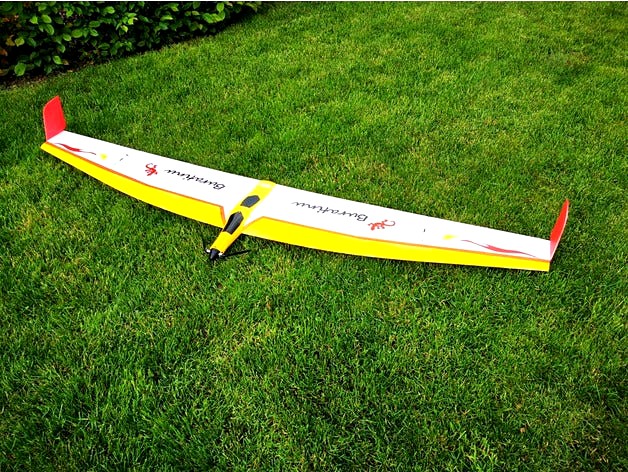
Buratinu Maxi 2000 by wersy
by Thingiverse
Last crawled date: 2 years, 9 months ago
Specifications
airfoils: own design
wing span: 2000 mm
wing chord: 284/140 mm
CoG: 198 mm from rear edge of the fuselage
motor camber: -4.6° (long fuselage front version 205 mm)
overall weight: 1140 g (PETG/LW PLA)
wing area: 45,5 dm²
wing loading: 25,1 g/dm²
motor: Extron 2220/12 1270 KV max 250W
folded propeller: 9 x 6"
battery: 1500 mAh 3S 40C
ESC: 30A
Print Settings
Wings
perimeter_extrusion_width = 0.5
layer_height = 0.25
perimeters = 1
fill_density = 0%
bottom_solid_layers = 4
top_solid_layers = 4
After Hans-Juergen tested the Buratinu 1600 I designed middle wing parts to expand the wingspan to 2000 mm.
Many thanks again Hans-Juergen, for printing and testing it for me!
This is way the Buratinu Maxi 2000 version was born ;)
All photographs are taken by him, and of course the video as well.
Many thanks for that too!
https://youtu.be/tHonqMbJ-0g
All other needed parts can be downloaded from Buratinu 1000
The special thing about this version also is that all parts of the wing, i.e. W3 to W5 as well as the elevons are identical to the original Buratinu version which are included here:https://www.thingiverse.com/thing:3047415
The wingend W6 is smaller. You must take it from the Buratinu Midi 1000https://www.thingiverse.com/thing:4280142
Or in case you can print larger, you can take the parts from here:https://www.thingiverse.com/thing:3857570
The Buratinu 1300 uses the same fuselage as the Buratinu Midi.
So you have to take it from here:https://www.thingiverse.com/thing:4280142
This is his report
The printing went completely easy even for the new large inner segments of the wing.
The half-shells and the skid-strip in connection with the fuselage extended at the front (205 fuselage nose) have proved very good. This makes everything look really stable, and even the (optional) launch hook for a bungee launch is glued into the skid reinforcement with a drop of epoxy via a small hole drilled from the outside. It's quick, easy and keeps the skid stable.
The center of gravity is minimally 195 mm, but I then moved it forward quite quickly and determined a range of 196 mm to 200 mm measured from the end of the fuselage as probably the best solution. Even with a CG of about 198 mm, 20 grams of lead is needed in the fuselage nose. I put the weight on the outside of the fuselage at the front for easy corrections. Later, the final weight should disappear inside the fuselage. There is enough space for this due to the extended 205 fuselage. In addition, I positioned a larger battery (1500 mA) as far forward as possible to avoid having to add more extra weight. Both measures are sufficient to achieve the CG - but this only works if the wings are printed light, i.e. with LW-PLA filament. For a wing printed in standard PLA, I don't think the center of gravity is still halfway reasonably achievable.
The motor I used is an Extron 2220/12. It has an outer diameter of 28 mm and fits the motor bulkhead exactly (bore 16/19 mm).
The 9" x 6" folding propeller clearly creates sufficient power for the model. 30A ESC is also well sized and on the safe side. In flights so far, it has been shown that the 2000 Buratinu gets too fast at full motor power in level flight and the wings start to flap. I have flown (even in climb) at half power as a rule. At full power the glider climbs almost vertically.
Some attention should be paid to the coloring on the underside of the wing. As a pure thermal glider, visibility of the model at higher altitudes becomes important so as not to lose sight of it. From experience with my 1600 Buratinu with green underside, I highly recommend choosing a more visible contrasting color (red or black).
After all the electronics found their place in the Buratinu 2000, the center of gravity was set, and the rudder deflections were programmed, I made the first takeoff as a pure straight glide with flit. The good news was that the CG wasn't completely wrong, but I had to walk just under 200 meters to retrieve the glider that had landed. He just wouldn't get back on the ground.
The next launch was then again with the bungee, but now with motor. I recorded this and the following launches with the helmet camera. The video shows the flight behavior of the Buratinu Maxi 2000 better than I could describe it with many words.
https://youtu.be/tHonqMbJ-0g
I would estimate that the 2000 Buratinu will remain probably the largest version from the Buratinu series with the same design principle. From my point of view this has several reasons.
The center of gravity can only be achieved by lengthening the fuselage, adding weight and using LW-PLA.
The wing loading can hardly be improved by the additional measures (CG/weights) compared to the 1600 (without additional weight). The value settles at about 25 g/dm². or just below.
The flight characteristics become more and more special with increasing size. While the 1300 Buratinu is an all-rounder and the 1600 a fast glider with ambitions for thermals, the 2000 should be particularly suitable as a pure light wind glider for thermals. In this respect it outshines all smaller Buratinu. However, its range of use is already clearly limited.
The really remarkable thing about this Buratinu construction kit series, from the original Buratinu to the Mini, the Midis and now the Maxi versions, is that it allows every model pilot to select and print the most suitable Buratinu for himself and his ambitions, depending on his preferences.
I have another video of the 1600 "frolicking" here.
https://youtu.be/0b0aUI8GmoI
I don't dare to do the same with the 2000 (yet) - but who knows, .....?
I am curious about the experiences of the other future 2000 Buratinu pilots. Because a rebuild is worthwhile in any case.
Finally, Michael, thank you very much for your design and for your support during the construction of the 2000 (half-shell, skid reinforcement, extended fuselage) and the many helpful suggestions - thank you!
airfoils: own design
wing span: 2000 mm
wing chord: 284/140 mm
CoG: 198 mm from rear edge of the fuselage
motor camber: -4.6° (long fuselage front version 205 mm)
overall weight: 1140 g (PETG/LW PLA)
wing area: 45,5 dm²
wing loading: 25,1 g/dm²
motor: Extron 2220/12 1270 KV max 250W
folded propeller: 9 x 6"
battery: 1500 mAh 3S 40C
ESC: 30A
Print Settings
Wings
perimeter_extrusion_width = 0.5
layer_height = 0.25
perimeters = 1
fill_density = 0%
bottom_solid_layers = 4
top_solid_layers = 4
After Hans-Juergen tested the Buratinu 1600 I designed middle wing parts to expand the wingspan to 2000 mm.
Many thanks again Hans-Juergen, for printing and testing it for me!
This is way the Buratinu Maxi 2000 version was born ;)
All photographs are taken by him, and of course the video as well.
Many thanks for that too!
https://youtu.be/tHonqMbJ-0g
All other needed parts can be downloaded from Buratinu 1000
The special thing about this version also is that all parts of the wing, i.e. W3 to W5 as well as the elevons are identical to the original Buratinu version which are included here:https://www.thingiverse.com/thing:3047415
The wingend W6 is smaller. You must take it from the Buratinu Midi 1000https://www.thingiverse.com/thing:4280142
Or in case you can print larger, you can take the parts from here:https://www.thingiverse.com/thing:3857570
The Buratinu 1300 uses the same fuselage as the Buratinu Midi.
So you have to take it from here:https://www.thingiverse.com/thing:4280142
This is his report
The printing went completely easy even for the new large inner segments of the wing.
The half-shells and the skid-strip in connection with the fuselage extended at the front (205 fuselage nose) have proved very good. This makes everything look really stable, and even the (optional) launch hook for a bungee launch is glued into the skid reinforcement with a drop of epoxy via a small hole drilled from the outside. It's quick, easy and keeps the skid stable.
The center of gravity is minimally 195 mm, but I then moved it forward quite quickly and determined a range of 196 mm to 200 mm measured from the end of the fuselage as probably the best solution. Even with a CG of about 198 mm, 20 grams of lead is needed in the fuselage nose. I put the weight on the outside of the fuselage at the front for easy corrections. Later, the final weight should disappear inside the fuselage. There is enough space for this due to the extended 205 fuselage. In addition, I positioned a larger battery (1500 mA) as far forward as possible to avoid having to add more extra weight. Both measures are sufficient to achieve the CG - but this only works if the wings are printed light, i.e. with LW-PLA filament. For a wing printed in standard PLA, I don't think the center of gravity is still halfway reasonably achievable.
The motor I used is an Extron 2220/12. It has an outer diameter of 28 mm and fits the motor bulkhead exactly (bore 16/19 mm).
The 9" x 6" folding propeller clearly creates sufficient power for the model. 30A ESC is also well sized and on the safe side. In flights so far, it has been shown that the 2000 Buratinu gets too fast at full motor power in level flight and the wings start to flap. I have flown (even in climb) at half power as a rule. At full power the glider climbs almost vertically.
Some attention should be paid to the coloring on the underside of the wing. As a pure thermal glider, visibility of the model at higher altitudes becomes important so as not to lose sight of it. From experience with my 1600 Buratinu with green underside, I highly recommend choosing a more visible contrasting color (red or black).
After all the electronics found their place in the Buratinu 2000, the center of gravity was set, and the rudder deflections were programmed, I made the first takeoff as a pure straight glide with flit. The good news was that the CG wasn't completely wrong, but I had to walk just under 200 meters to retrieve the glider that had landed. He just wouldn't get back on the ground.
The next launch was then again with the bungee, but now with motor. I recorded this and the following launches with the helmet camera. The video shows the flight behavior of the Buratinu Maxi 2000 better than I could describe it with many words.
https://youtu.be/tHonqMbJ-0g
I would estimate that the 2000 Buratinu will remain probably the largest version from the Buratinu series with the same design principle. From my point of view this has several reasons.
The center of gravity can only be achieved by lengthening the fuselage, adding weight and using LW-PLA.
The wing loading can hardly be improved by the additional measures (CG/weights) compared to the 1600 (without additional weight). The value settles at about 25 g/dm². or just below.
The flight characteristics become more and more special with increasing size. While the 1300 Buratinu is an all-rounder and the 1600 a fast glider with ambitions for thermals, the 2000 should be particularly suitable as a pure light wind glider for thermals. In this respect it outshines all smaller Buratinu. However, its range of use is already clearly limited.
The really remarkable thing about this Buratinu construction kit series, from the original Buratinu to the Mini, the Midis and now the Maxi versions, is that it allows every model pilot to select and print the most suitable Buratinu for himself and his ambitions, depending on his preferences.
I have another video of the 1600 "frolicking" here.
https://youtu.be/0b0aUI8GmoI
I don't dare to do the same with the 2000 (yet) - but who knows, .....?
I am curious about the experiences of the other future 2000 Buratinu pilots. Because a rebuild is worthwhile in any case.
Finally, Michael, thank you very much for your design and for your support during the construction of the 2000 (half-shell, skid reinforcement, extended fuselage) and the many helpful suggestions - thank you!
Similar models
thingiverse
free

Buratinu Maxi 1600 by wersy
...perimeter_extrusion_width = 0.5
layer_height = 0.25
perimeters = 1
fill_density = 0%
bottom_solid_layers = 4
top_solid_layers = 4
thingiverse
free

Buratinu Midi 13000 by wersy
...perimeter_extrusion_width = 0.5
layer_height = 0.25
perimeters = 1
fill_density = 0%
bottom_solid_layers = 4
top_solid_layers = 4
thingiverse
free

RC Crobe micro-glider (wings and motor mount)
...weight (ready to flight). 22gr for each semi-wing, pretty similar to balsa wings. wing joiner: 3mm rod, sanded a...
thingiverse
free

Mini Hummel by wersy
... 28-36 1200kv
propeller: aeronaut cam aeronaut carbon classic 9 x 6.5"
battery: turnigy 1600 mah 4s
motor camber: tilted -2°
thingiverse
free

Wing: Launch-Skid Pads by claytonbakerjr
...ill need to be made to those.
i am hoping that the small stands help support them better without needing software
supports added.
grabcad
free

Mini BUG RC Glider
...r with bldc motor with about 70cm wing span.
main frame and wings parts are 3d printed from pla with carbon fiber beams and rods.
thingiverse
free

Wing: Launch-Skid Pads by claytonbakerjr
...ware
supports added.
this is a remix from zanthor's hook.
i made some small edits to the hook area and added the 2 thru holes
thingiverse
free

Wilde Hummel (short fuselage) by wersy
...g is now at 397 mm from the front of the fuselage.
all other parts and the print settings are indentical with the original plane.
thingiverse
free

BATTERY TRAY PHOENIX 1600 mm by VisiTor
...s. these pictures were taken from volantex eu:
https://www.volantexrc.eu/volantex-rc-phoenix1600-16m-glider-v742-6-kit-p-247.html
thingiverse
free

Monoplane 1914 RC by hermelinn
...fully printed model. i thought about something that looks similar like a fokker. the problem of this kind of...
Buratinu
thingiverse
free

Buratinu Midi 13000 by wersy
...perimeter_extrusion_width = 0.5
layer_height = 0.25
perimeters = 1
fill_density = 0%
bottom_solid_layers = 4
top_solid_layers = 4
thingiverse
free

Buratinu Maxi 1600 by wersy
...perimeter_extrusion_width = 0.5
layer_height = 0.25
perimeters = 1
fill_density = 0%
bottom_solid_layers = 4
top_solid_layers = 4
thingiverse
free

Mini Buratinu LW PLA by wersy
...m for this if the rear tubes are shortened. therefore i upload a remix of the modified rear fuselage.
fuselage rear 860 lwpla.stl
thingiverse
free

Flying Wing Buratinu by wersy
...ve designed a special fuselage nose.
fuselage 1 rear-mounted mc3
firewall rear-mounted
it has already integrated 3° motor camber.
Wersy
thingiverse
free

Fan 80 mm.stl by wersy
...fan 80 mm.stl by wersy
thingiverse
just a fan 80 mm for your planning.
thingiverse
free

LED Ring Mount for Printrbot by wersy
...led ring mount for printrbot by wersy
thingiverse
this mount can be fastened on one side of the extruder.
thingiverse
free

Penholder Tubes by wersy
...one for the kids with some more tubes.
it is by far not so artfully because i am just an engineer - though i hope you like it :-)
blendswap
free

WERSI Galaxis
...ocal z direction, the lights will switch on or of. for moving the hole organ there is a squared empty.
have fun with this peace.
thingiverse
free

Carrier to carry the Printrbot by wersy
...ty small and not so heavy it is a bit cumbersome to transport because the only stiff parts are the bases connected with the rods.
thingiverse
free
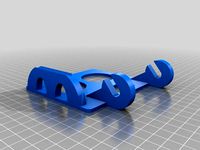
Prusa I2 holder for wersy's case for RRD full graphic LCD by byteborg
...i like the rrd smart lcd and have it integrated in wersy's case. i needed a way to mount it on my prusa i2, so here it is :)
thingiverse
free

Mount for the Full Graphic Smart LCD Controller Case by wersy 2020 3030
...ing for wersy's case holes... so i designed this mount parts for this great lcd case https://www.thingiverse.com/thing:87250.
thingiverse
free

Turbo Car RC (experimental) by wersy
...be/6tzpffwsd0q
tires:http://www.makeblock.com/tire-68-5x22mm-4-packhttps://www.kiwi-electronics.nl/band-68-5x22mm-4-stuks?lang=de
thingiverse
free

Case for the Full Graphic Smart LCD Controller by wersy
...is a case for the full graphic smart lcd controller. http://www.reprapdiscount.com/home/34-full-graphic-smart-lcd-controller.html
thingiverse
free

Mini Buratinu LW PLA by wersy
...m for this if the rear tubes are shortened. therefore i upload a remix of the modified rear fuselage.
fuselage rear 860 lwpla.stl
Maxi
3ddd
$1

maxi console1
...maxi console1
3ddd
maxi
maxi console1
3ddd
$1

eli Maxy
... deli maxy
фабрика:bruno zampa
модель: deli maxy
стиль: классика/the classics
описание: кресло/armchair
3d_export
$5

samantha maxis
...samantha maxis
3dexport
samantha maxis 3d model good quality for animation
3ddd
$1
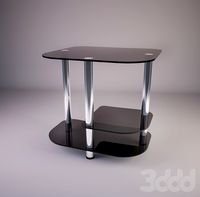
Стол Maxi Komp 803
...
компьютерный , maxi.
современный компьютерный стол maxi komp 803. габариты 800*730*730.
3d_export
$20

tissue box c-maxi
...tissue box c-maxi
3dexport
tissue box c-maxi
design_connected
$7

Jei Jei Maxi
...jei jei maxi
designconnected
penta jei jei maxi pendant lights computer generated 3d model. designed by nicola gallizia.
turbosquid
$225
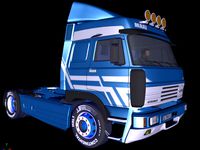
Liaz 300 MAXI
...
royalty free 3d model liaz 300 maxi for download as and dds on turbosquid: 3d models for games, architecture, videos. (1378461)
turbosquid
$35

Woman Maxi Dress
...ty free 3d model woman maxi dress for download as max and pac on turbosquid: 3d models for games, architecture, videos. (1451045)
3ddd
free

Jaga - Maxi FT-10
... om
радиатор jaga - maxi ft-10
width: 63 cm
depth: 13 cm
height: 59 cm
сайт производителя:http://www.jaga.be/
3ddd
$1

SANCAL / MAXIE
..., широта 49 высота сиденья – 46.
основа из хромированной стали.
обивка – ткань.
платформа: 3dsmax 2010 +fbx(vray)+3ds(vray)+obg
2000
turbosquid
$45

2000
... available on turbo squid, the world's leading provider of digital 3d models for visualization, films, television, and games.
3d_export
$17
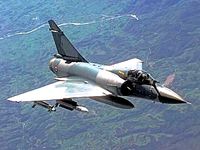
Dassault Mirage 2000
...dassault mirage 2000
3dexport
dassault mirage 2000
3d_export
$17
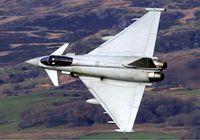
Eurofighter EF-2000
...eurofighter ef-2000
3dexport
eurofighter ef-2000
turbosquid
$15

human-2000
...turbosquid
royalty free 3d model human-2000 for download as on turbosquid: 3d models for games, architecture, videos. (1174909)
turbosquid
$199
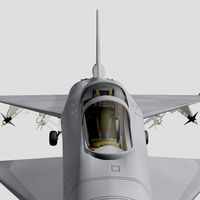
Eurofighter 2000
...d
royalty free 3d model eurofighter 2000 for download as max on turbosquid: 3d models for games, architecture, videos. (1187782)
turbosquid
free

Sputnik 2000
...
free 3d model sputnik 2000 for download as max, obj, and fbx on turbosquid: 3d models for games, architecture, videos. (1346035)
turbosquid
$100

Mirage 2000
...y free 3d model mirage 2000 for download as max, obj, and fbx on turbosquid: 3d models for games, architecture, videos. (1432701)
turbosquid
$7

Aibolit 2000
... 3d model aibolit 2000 for download as max, max, max, and obj on turbosquid: 3d models for games, architecture, videos. (1561963)
3ddd
$1
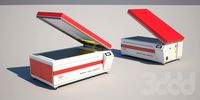
Cyrel 2000 ECLF
...дование , производство , станок
cyrel 2000 eclf
turbosquid
$120

Fiat 2000
...d model fiat 2000 for download as 3ds, max, obj, fbx, and stl on turbosquid: 3d models for games, architecture, videos. (1453694)
